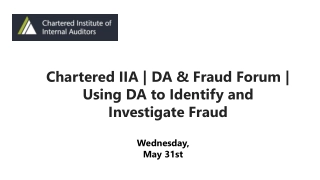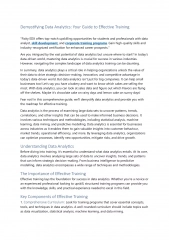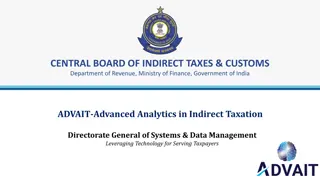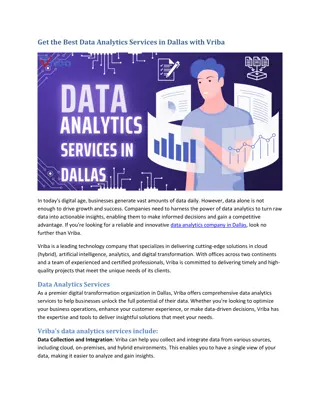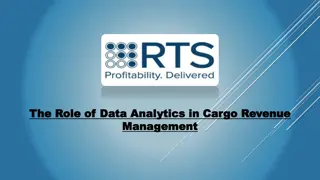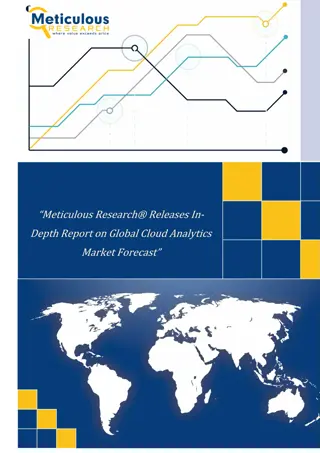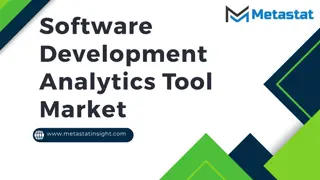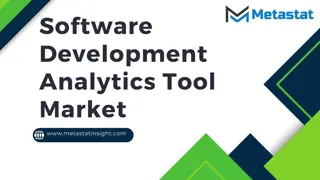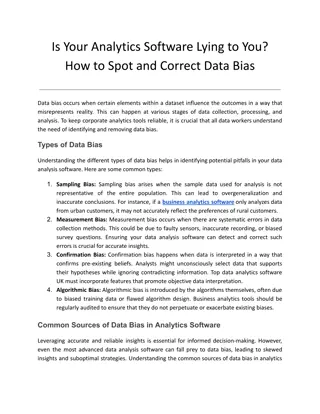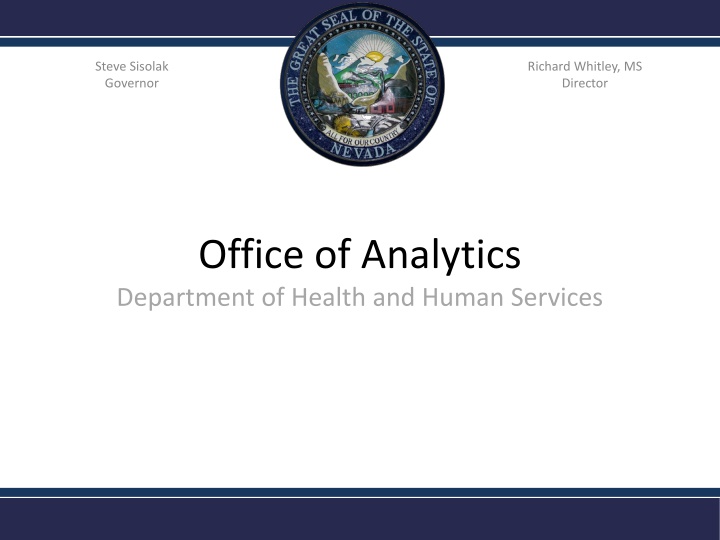
Analytics in Healthcare Data Management
"Explore the role of analytics in healthcare data management, including available data sources, analysis methods, and benefits. Learn how analytics can quantify occurrences, compare populations, identify root causes, and drive policy changes in health services. Discover how to present data effectively with case counts, crude rates, and age-adjusted rates."
Download Presentation

Please find below an Image/Link to download the presentation.
The content on the website is provided AS IS for your information and personal use only. It may not be sold, licensed, or shared on other websites without obtaining consent from the author. If you encounter any issues during the download, it is possible that the publisher has removed the file from their server.
You are allowed to download the files provided on this website for personal or commercial use, subject to the condition that they are used lawfully. All files are the property of their respective owners.
The content on the website is provided AS IS for your information and personal use only. It may not be sold, licensed, or shared on other websites without obtaining consent from the author.
E N D
Presentation Transcript
Steve Sisolak Governor Richard Whitley, MS Director Office of Analytics Department of Health and Human Services
Office of Analytics Established November 2017 Provide analytical support to all Divisions in DHHS http://dhhs.nv.gov/Progra ms/Office_of_Analytics/DH HS_Office_of_Analytics/
Available Data: AVATAR (adult and children's mental health) Medicaid Data Warehouse Enrollment Claims Adult Substance Abuse Treatment Episode Dataset (TEDS) Behavioral Risk Factor Surveillance System (BRFSS) Nevada Central Cancer Registry (NCCR) Nevada Early Home Visiting Child Welfare Data Nevada Population Data (State Demographer) Criminal History Repository Immunizations (WebIZ) DWSS Enrollment Nevada Electronic Birth Registry System Early Hearing Detection Nevada Electronic Death Registry System Health Care Quality and Compliance (HCQC) PRAMS HIV, STD, TB, Communicable Disease Cases (NBS/NEDSS) Prescription Drug Monitoring Program Sentinel Events Registry Hospital Emergency Department Billing (HEDB) Syndromic Surveillance Hospital Inpatient Billing (HIB) Women Infants and Children Data (WIC, NVWISH) Juvenile Justice Data Youth Risk Behavior Survey (YRBS) Medicaid Decision Support System (DSS) Department of Health and Human Services 3
Quantify an occurrence. Describe a specific population. Compare your data against relative benchmarks: https://www.healthypeople.gov/2020/ topics-objectives Follow long-term trends and patterns of disease, conditions, services, costs, etc. Detect sudden changes in occurrence and distribution of diseases, conditions, services, costs, etc. Identify root causes of changes in patterns of disease, conditions, services, costs, etc. Direct resources ($ and people) Initiate policy change What can analytics do for you?
Help you decide how to present your data: Total Case Count: number of cases in a population/area in a given amount of time or on a certain date. Crude Rate: number of new cases in a specified population during a period of time, usually expressed as the number of cases per 100,000 population at risk (normalizes the measure for population density). Age-Adjusted Rate: calculated by multiplying each crude rate by the weight in that age group of the U.S. standard population, and summing the products (normalizes the measure for population density and age distribution). What can analytics do for you?
What can analytics do for you? Who is the population of interest?
Questions and Discussion Kyra Morgan, MS State Biostatistician Office of Analytics Department of Health and Human Services kmorgan@health.nv.gov 775-684-4161



